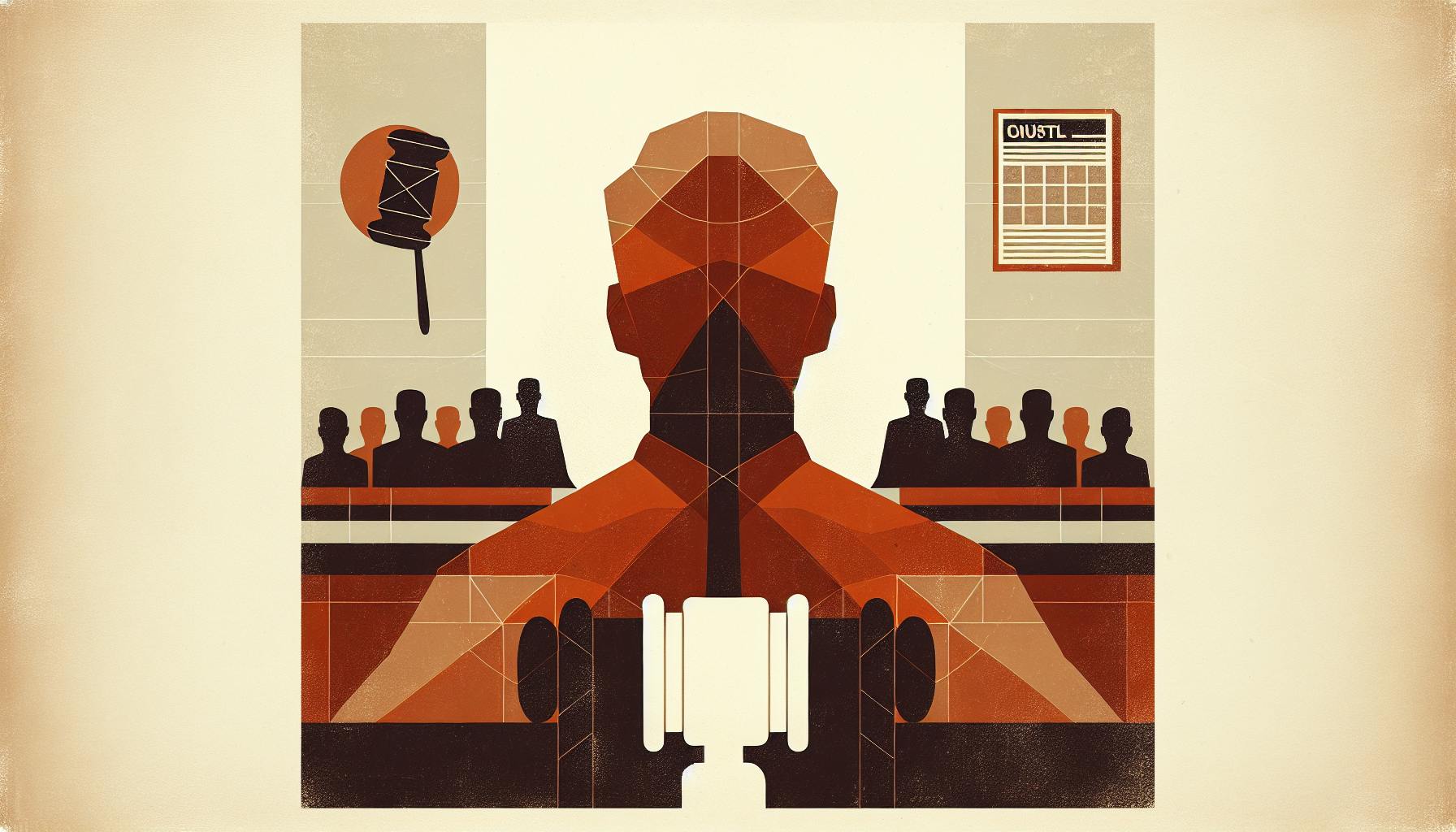Most true crime aficionados are familiar with the infamous Lizzie Borden case.
Yet beneath the surface of this gruesome family murder lies a complex web of family dynamics, questionable evidence, and enduring public intrigue that deserves deeper analysis.
In this post, we will unravel key details surrounding the crimes, the sensational trial that followed, and examine the theories and questions that still captivate the public imagination to this day.
Introduction to the Lizzie Borden Family Murder Case
The infamous Lizzie Borden case shocked the nation in 1892, when Lizzie was accused of brutally murdering her father and stepmother with an axe in their family home in Fall River, Massachusetts.
The Borden Family Dynamics
The Borden household included Andrew Borden, a successful businessman, his wife Abby, his daughters Emma and Lizzie, and the family's maid Bridget. Tensions brewed in the home over Andrew's stinginess and the daughters' desire for a more lavish lifestyle.
Countdown to Tragedy: Timeline of Events
In the days leading up to the murders, Lizzie and Emma's uncle visited, sparking conflict. On August 3rd, the family became ill after a meal, arousing suspicions of poisoning. The next morning, Abby Borden was found dead, followed by Andrew Borden shortly after.
The Morning of the Family Murder
On the morning of August 4th, Bridget was cleaning windows when she discovered Abby Borden's slain body. She fetched a neighbor, who found Andrew's body soon after. Lizzie became the prime suspect as she provided conflicting accounts about her whereabouts that morning.
The Gruesome Discovery at the Borden House
Discovery of Andrew Borden's Body
On the morning of August 4, 1892, Andrew Borden's body was found lying face down on the couch in the downstairs sitting room of the Borden home in Fall River, Massachusetts. His face was turned to the right side and he was covered in blood. The back of his head had been smashed by repeated blows of a sharp instrument inflicted with considerable force, crushing his skull. The murder weapon was suspected to be a hatchet found in the basement. Lizzie Borden, Andrew's daughter, claimed to have found her father dead shortly before 11 am after returning from a barn behind the house. She alerted the family's maid, Bridget Sullivan, who viewed Andrew's slain body.
Discovery of Abby Borden's Body
Soon after, a more thorough search of the house led to the gruesome discovery of Abby Borden, Andrew's wife, dead in an upstairs guest bedroom. She was found lying face down between the bed and the wall on the floor, covered in blood that had soaked through her dress and into the carpet underneath. The back of Abby's head had been savagely split open by repeated blows from a hatchet or axe. Her wounds were described as being more brutal and excessive compared to those inflicted on Andrew. It appeared Abby had been killed first, about an hour or more before Andrew.
Crime Scene and Evidence: The Lizzie Borden Axe
The crime scene presented abundant blood evidence. With two victims slain by vicious blows from a hatchet, early suspicion fell on Lizzie Borden as the prime suspect since she was the one to discover Andrew's body and had been home at the time of the murders. An axe head with a broken handle was found in the basement near a hatchet with a burned handle. The weapons were suspected of being used in the crimes. As Lizzie gave contradictory accounts of her whereabouts and actions on the morning of the murders, the evidence increasingly pointed to her involvement despite lack of blood stains on her person or clothes.
The Murder Trial of Lizzie Borden in Massachusetts
Actions Raising Suspicion
Lizzie Borden's odd behavior after the murders raised suspicion. She gave inconsistent statements to the police about her whereabouts and actions on the day of the crime. Her burning of a dress shortly after the murders was also seen as suspicious by investigators.
Evidence Against Lizzie Borden
The main evidence indicating Lizzie Borden committed the murders was opportunity and motive. As the victims' daughter living in the home, she had opportunity. The victims were also killed with a hatchet, and a hatchet head was found in the basement of the Borden home. Additionally, Lizzie stood to inherit a significant sum upon her parents' deaths.
The Trial of the Century: A Public Spectacle
Lizzie Borden's trial in 1893 was highly publicized, with hundreds gathering outside the courthouse daily. The gruesome nature of the murders, wealth of the victims, and gender of the accused murderer captured public intrigue. Ultimately though, the lack of forensic evidence led to Lizzie's acquittal. She was found not guilty by the jury after an hour of deliberation.
sbb-itb-585a0bc
sbb-itb-585a0bc
Analyzing the Lizzie Borden Story: Theories and Aftermath
The Lizzie Borden case continues to fascinate and intrigue, over 130 years later. Though Lizzie was acquitted, questions linger over who truly murdered Andrew and Abby Borden that fateful day in 1892.
Other Possible Suspects
Some argue others in the Borden household, like live-in maid Bridget Sullivan, could have committed the crimes. Others suggest unknown intruders entered the home and killed Andrew and Abby before escaping unseen. Without concrete evidence, however, these theories remain speculative.
Examining Lizzie's Guilt - Arguments For and Against
Several factors point to Lizzie as the prime suspect:
- She was home during the murders
- Evidence suggests she burned a dress after the fact
- Her relationship with stepmother Abby was strained
However, counterarguments highlight the lack of blood evidence on Lizzie after the brutal attacks, no murder weapon being found, and no clear motive established.
Ultimately, the case comes down to circumstantial evidence and speculation. No alternative theory or suspect has conclusively supplanted Lizzie as the perpetrator.
Life After Trial and Death
Though acquitted, Lizzie remained ostracized in Fall River, Massachusetts. She bought a new home and lived reclusively with her sister Emma until Emma died in 1927. Just days later, Lizzie herself died at age 66.
The sisters were buried beside their murdered parents - their joint gravestone reading "Sisters." Lizzie took her reasons for the murders, if guilty, to the grave.
Lizzie Borden's Legacy in Media
The macabre ax murders spawned rhymes, films, tourist attractions at the "Lizzie Borden Bed and Breakfast Museum," and over a dozen books examining the enigma of Lizzie Borden.
The story has become folklore, providing a glimpse into 1890s America and continuing to entrance true crime enthusiasts seeking to unravel this unsolved puzzle. Lizzie Borden lives on as the central figure in one of America’s most notorious unsolved crimes.
Cultural Impact and Continued Fascination
The Lizzie Borden Documentary and Film Adaptations
The Lizzie Borden murder case has been the subject of several documentaries and films over the years. These works have examined the facts of the case, the evidence, and the enduring intrigue surrounding Lizzie Borden herself. Some key examples include:
-
The 1975 television film The Legend of Lizzie Borden starred Elizabeth Montgomery as Lizzie and took creative liberties in dramatizing the story.
-
The 2014 documentary Lizzie Borden Took an Axe on the Investigation Discovery channel took a deeper look at the crime scene evidence and police investigation tactics.
-
In 2019, the PBS documentary The Real Lizzie Borden revisited the case using modern forensic analysis methods to re-examine key pieces of evidence.
Overall, the continued fascination with retelling and reimagining the Lizzie Borden story speaks to its timeless intrigue and the public's desire to unravel the mysteries behind what really happened.
Literary Interpretations: Lizzie Borden Books
The complex tale of Lizzie Borden has inspired many book authors to analyze the case from various angles. Some key examples of Lizzie Borden books include:
-
Lizzie Borden: A Case Book of Family and Crime in the 1890s by Joyce Williams and Robert Sullivan takes a detailed look at the crimes, investigation records, and media coverage surrounding the case.
-
The Missing Chapter in the Lizzie Borden Case by Robert Sullivan presents a new theory implicating Lizzie's sister Emma in the murders.
-
Historical fiction novels like The Lizzie Borden Murders by James Neally Walsh and Lizzie by Evan Hunter creatively imagine what might have happened while taking liberties with the facts.
These varied literary interpretations highlight the depth of the enduring public fascination with Lizzie's story and the desire to keep reexamining all angles of the case.
The Lizzie Borden House as a Historical Site
Today, the actual Lizzie Borden house where the infamous murders took place in Fall River, Massachusetts has been converted into a bed and breakfast museum. Visitors can tour the home and crime scene, see preserved evidence like the sofa where Abby Borden's body was found, and learn more about the case through daily reenactments.
The site's transformation into a macabre tourist attraction speaks to the public's morbid curiosity and desire to get closer to the story of Lizzie Borden. As a historical site, it allows the legend to live on and introduces new generations to one of America's most chilling unsolved crimes. The commercialization also highlights how deeply the Lizzie Borden case has seeped into American folklore and pop culture.
Conclusion: The Enduring Mystery of the Borden Family Murder
The trial of Lizzie Borden is one of the most infamous murder cases in American history. Despite Lizzie being acquitted of the brutal axe murders of her father and stepmother in 1892, the case remains shrouded in mystery and intrigue.
Key points from the trial include:
-
The lack of concrete evidence tying Lizzie directly to the murders. No murder weapon was ever found.
-
Lizzie's odd behavior, including burning a dress after the murders. This raised suspicions but did not prove guilt.
-
The violence inflicted on the victims suggested an emotional motive like family conflict. But the prosecution could not prove Lizzie committed the murders.
After over a century, questions still remain about what truly happened inside the Borden home:
-
Did Lizzie commit the murders herself in a crime of passion? Or was she wrongly accused?
-
If Lizzie was innocent, who else could have wanted her family dead?
-
Will modern technology like DNA analysis finally solve this enduring mystery?
While we may never know the full truth, the legend of Lizzie Borden lives on as one of the most perplexing and fascinating cases in true crime history. The violent axe murder of her family, her controversial trial, and her eventual acquittal still captivate the public imagination generations later.


